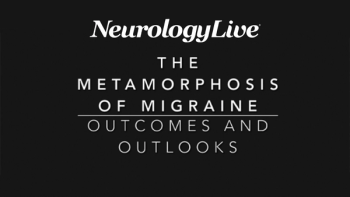
Solid Biosciences noted that its response to the agency requests for further information about manufacturing as well as updated safety and efficacy data on all dosed patients led to the lift.

Matt Hoffman, Editorial Director for NeurologyLive, has covered medical news for MJH Life Sciences, NeurologyLive’s parent company, since 2017. He executive produces the NeurologyLive Mind Moments® podcast, and hosted the Medical World News show Deep Dive. Follow him on Twitter @byMattHoffman or email him at [email protected]

Solid Biosciences noted that its response to the agency requests for further information about manufacturing as well as updated safety and efficacy data on all dosed patients led to the lift.

Zosano Pharma noted that the DRL does not reflect the final FDA decision on the application, though the approval of zolmitriptan by its PDUFA action date of October 20, 2020, is no longer likely as a result.

The investigators noted that continuous non-invasive blood pressure monitoring upon standing may aid in the identification of a modifiable risk factor for syncope-related falls in patients with Parkinson disease.

Post hoc analysis of the ATACH-II trial suggest that intensive lowering of systolic blood pressure in individuals with initial levels ≥220 mmHg increases the rate of neurological deterioration over 24 hours.

The medical director manager of neuroscience at Genentech offered her perspective on the mountain of data presented at MS Virtual 2020 on the recently approved NMOSD treatment.

Aquestive Therapeutics plans to provide the agency with information on pharmacokinetic modeling to demonstrate that the desired levels of diazepam exposure can be achieved with dose adjustments.

The platform, dubbed DystoniaNet, was able to identify 3 varieties of focal dystonia in a matter of 0.36 seconds with almost 100% accuracy.

The findings suggest that this insomnia phenotype is a more biologically severe form of the disorder associated with cardiovascular, cerebrovascular, and neurocognitive morbidity.

"Mind Moments," a podcast from NeurologyLive, brings you an exclusive interview with David Vossler, MD.

The current perspective on the care of patients and the anticipated developments of the future are detailed in part 3 of this special 3-part multimedia series on the evolution of migraine care.

The medical director manager of neuroscience at Genentech discussed the swath of data presented on the humanized anti-CD20 monoclonal antibody at MS Virtual.

Early intensive treatment was more effective in controlling disability progression over time compared with an escalation therapy approach.

The positive top-line data from Study 3 revealed that children with Dravet syndrome experienced more than a 60% greater reduction in mean monthly convulsive seizures compared to placebo.

The director of the VA Southwest Parkinson’s Disease Research, Education, and Clinical Centers spoke to the importance of patient-focused interventions in PD.

Atara Biotherapeutics’ allogeneic EBV-targeted T-cell therapy, ATA188, is well-tolerated in phase 1, with a dose identified for the randomized placebo-controlled portion of the study.

Marinus Pharmaceuticals’ positive allosteric GABAA receptor modulator ganaxolone was associated with significant median reductions in 28-day major motor seizure frequency compared to placebo.

A pair of datasets from the phase 3b CASTING study of ocrelizumab (Ocrevus; Genentech) suggest that patients treated with the agent experienced high rates of no evidence of disease activity status regardless of prior DMT exposure.

The ongoing fight to add to the epidemiologic understanding of migraine is explored in part 2 of this special 3-part multimedia series on the evolution of migraine care.

The director of the VA Southwest Parkinson’s Disease Research, Education, and Clinical Centers offered background the inspiration for the study and why loneliness should be addressed in these patients.

The recently approved apomorphine sublingual film (Kynmobi; Sunovion) maintained efficacy over the long-term, with at least 74% of patients experiencing full ON within 30 minutes post-dose at each time point.

Data show that higher CSF tau levels at diagnosis correlated with worse disability independent of age, though no such associations were identified with amyloid-beta.

The COMT inhibitor, which was approved in April 2020, may be a worthwhile option as a first-line adjunctive treatment for those with Parkinson disease with motor fluctuations.

Three-year data from a phase 1 study of Voyager Therapeutics’ VY-AADC01 suggest it is safe and offers potential benefits for patients with Parkinson disease.

Results from a phase 2 pilot study of nabilone in Parkinson disease suggest that the synthetic cannabinoid might hold therapeutic potential for nonmotor symptoms.

Mind Moments, a podcast from NeurologyLive, brings you an exclusive interview with Stewart Tepper, MD, in part 1 of this special 3-part multimedia series on the evolution of migraine care.

The investigator at the Healey & AMG Center for ALS at Massachusetts General Hospital spoke to the CENTAUR open-label extension and AMX0035’s development.

The Project ALS-funded oral MAP4 kinase inhibitor has been described in the literature as an exceptionally potent, metabolically stable, and blood-brain barrier-penetrant compound.

The chief scientific officer at the Parkinson’s Foundation shares his perspective on the current state of Parkinson research and development amid the challenges of the pandemic.

Multidisciplinary teams who had the pocket card available had shorter times to rescue therapy initiation and similar rates of adequate dosing.

Findings suggest that compared with isolated cases, both earlier age at initial episode and a higher prevalence of personal and family history of migraine are linked to TGA recurrence.